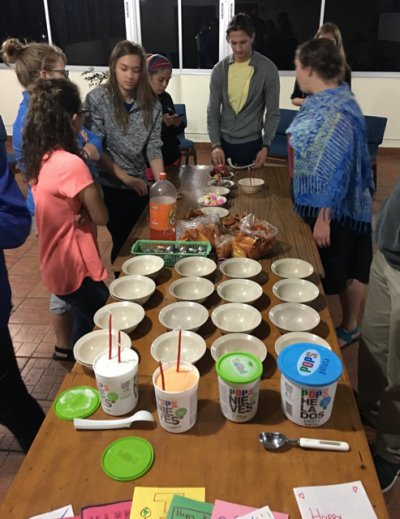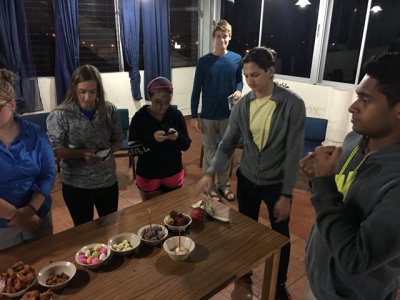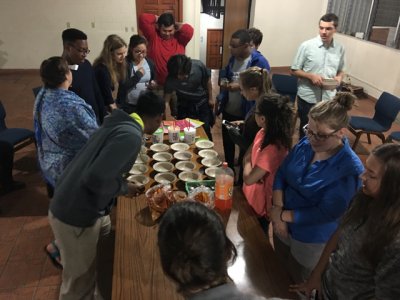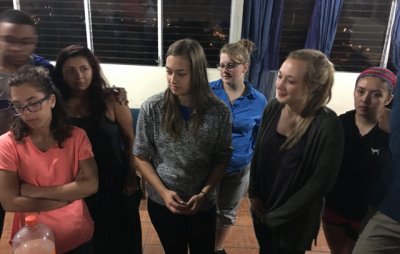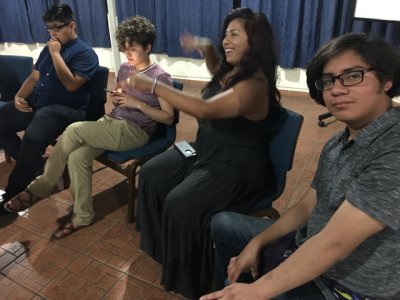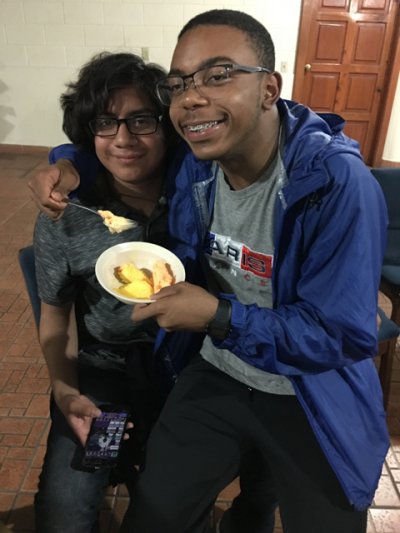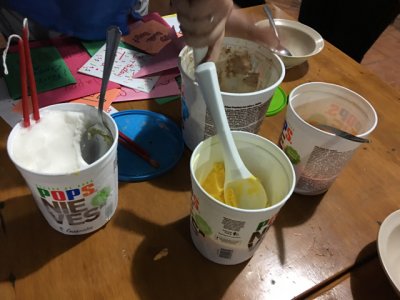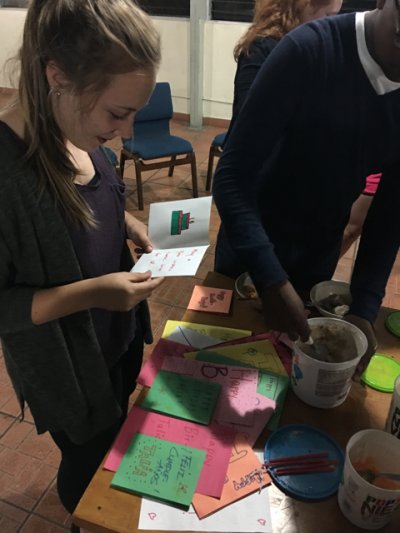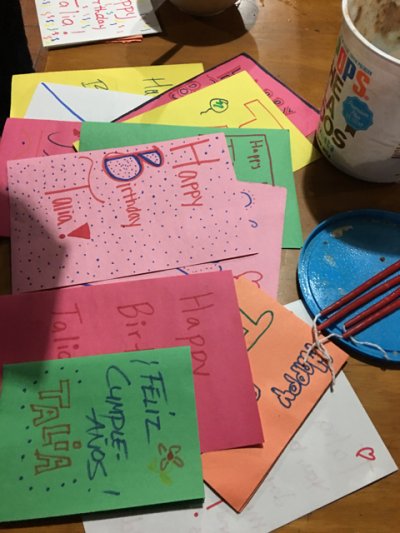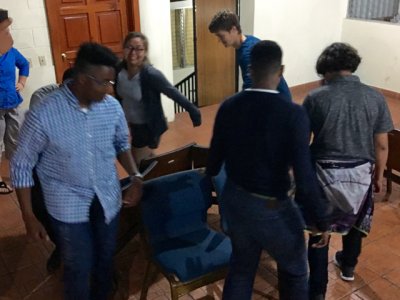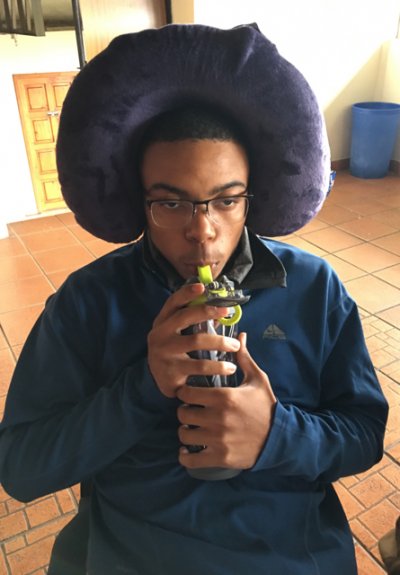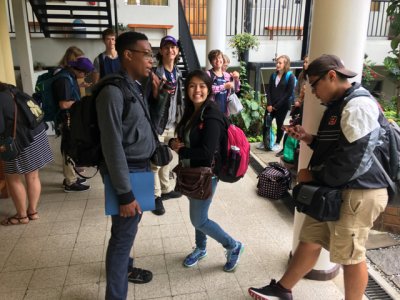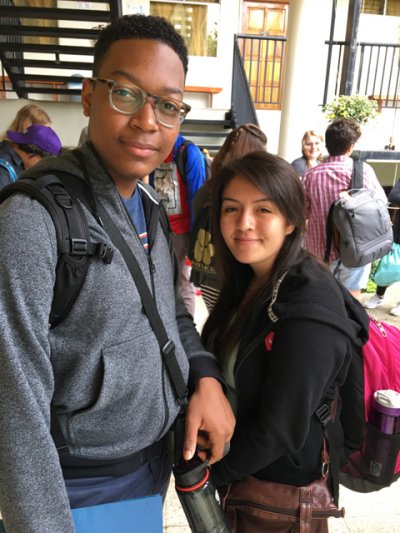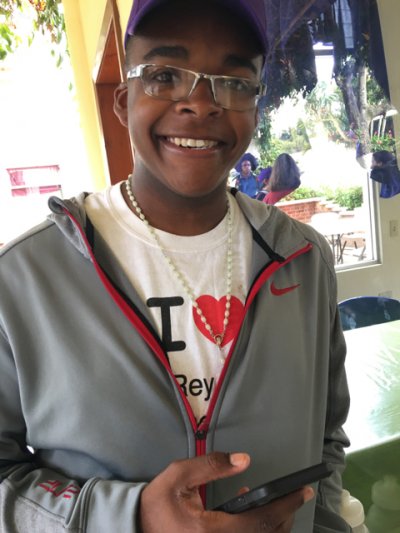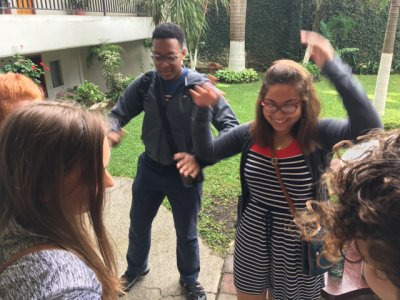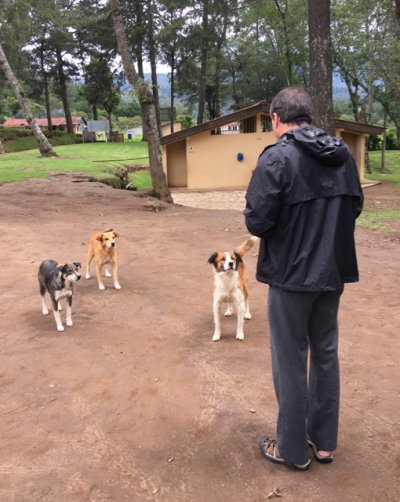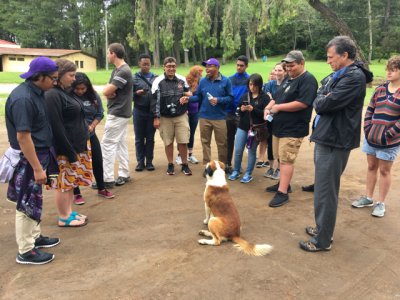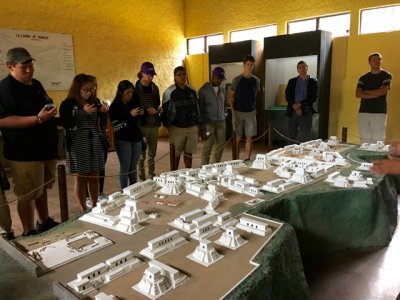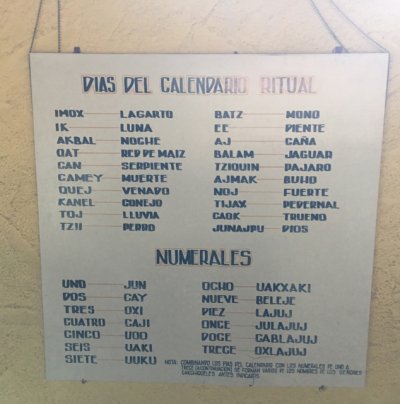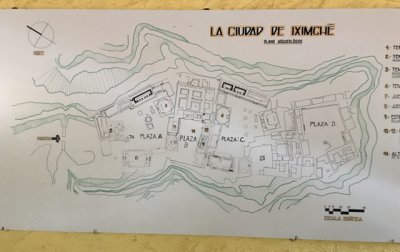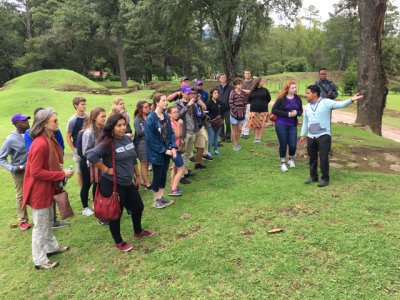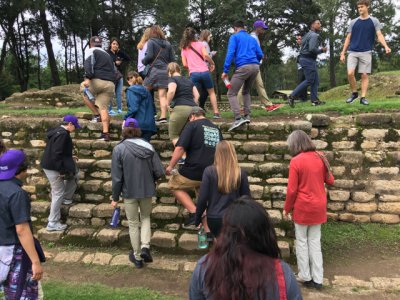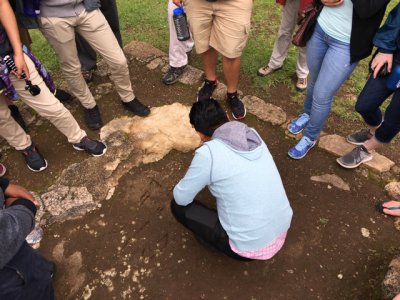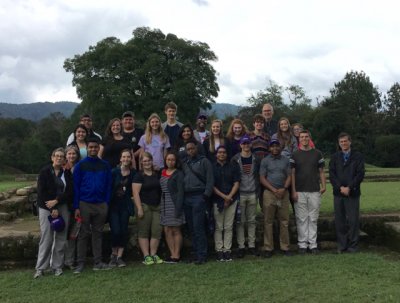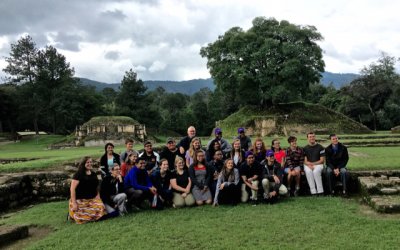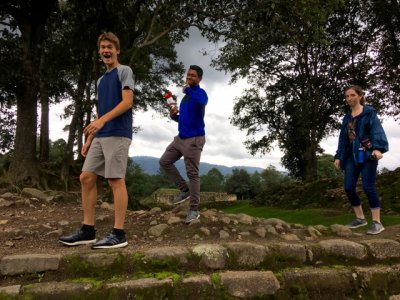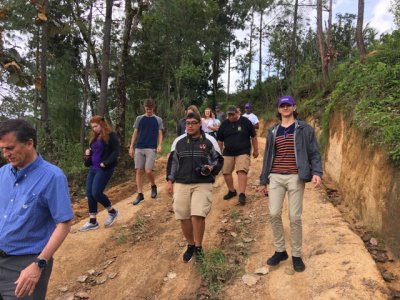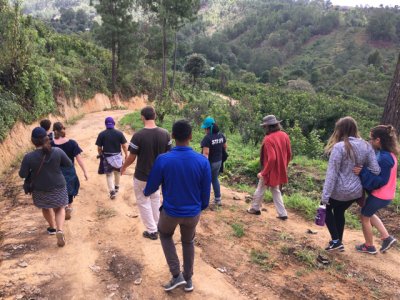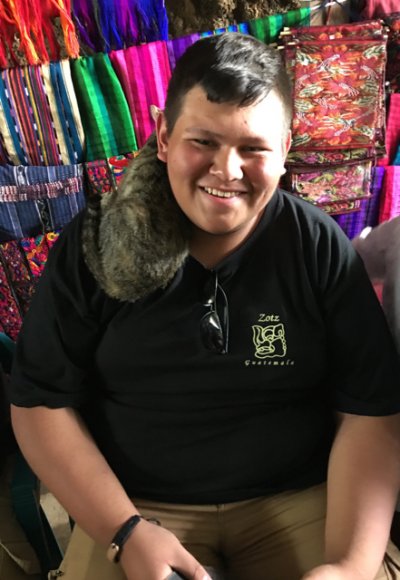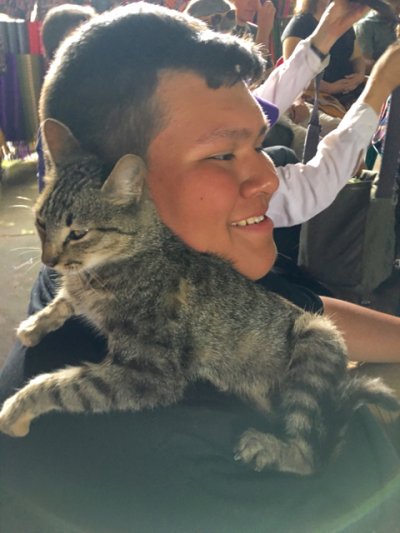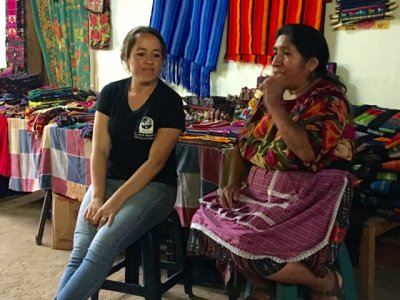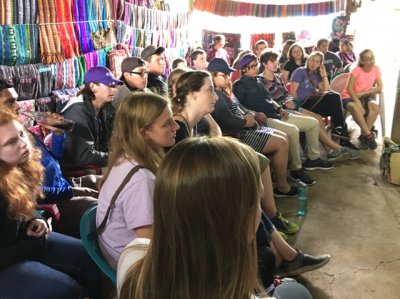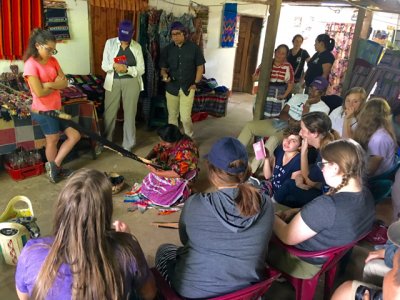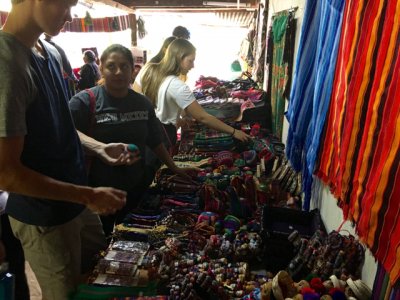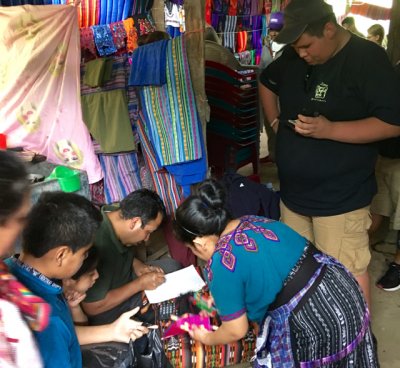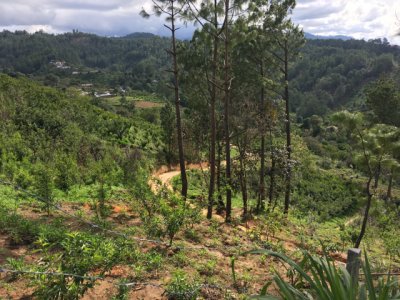Day Four: Iximche Mayan Ruins and Widows’ Cooperative
We’re back on Semilla’s campus after a three-day trip east to several sites, during which we had almost no wi-fi access. I’ll be posting three different blogs tonight, so please keep checking back.
Wednesday evening we celebrated Talia’s 18th birthday with local ice cream and local snacks, music chairs, and a card-giving fest. Peter and Gloria organized the event, which was enjoyed very much by the group. We have one more birthday yet next week, so we’re looking forward to that one as well.
Thursday morning we headed east on our school bus for the first leg of a three-day journey. Our first stop was the Iximche Mayan Ruins, a pre-Columbian, Mesoamerican archaeological site in the western highlands of Guatemala. Iximche was the capital of the late postclassic Kaqchikel Maya kingdom from 1470 until 1524, when the Spanish conquistadors arrived in this area. Only four ruling/owning families lived in the stepped-pyramid stone village, which others who worked the land lived in surrounding fields and protected the wealthy families. Our guide, Melvin, also showed us how to write Mayan numerals, which use only three symbols for all numbers, and showed us that contemporary Guatemalan bills have Mayan numbers as well.
In 1980, during the Guatemalan Civil War, a meeting took place at the ruins between guerrillas and Maya leaders that resulted in the guerrillas stating that they would defend indigenous rights. A ritual was carried out at the site in 989 in order to reestablish the ruins as a sacred place for Maya ceremonies. United States President George W. Bush visited the site in 2007, and in the same year Iximche was the venue for the III Continental Summit of Indigenous Peoples and Nationalities of Abya Yala.
Following the tour of the sacred Mayan site, we traveled another hour to the Proyecto Ruth y Noemi, a project begun in 1984 when a group of 20 civil war widows in Chontola, a Quiche village in the highlands of Guatemala, received a grant to buy 100 chickens. After the widows at Chontola served us a delicious meal of rice, chicken and tortillas, Maria, who is head of the organization, told the story of her husband’s murder when he was only 24 years old. Her husband had refused to join the guerrilla forces during the civil war, but he also refused to join government forces against the guerrillas. When he did so, government patrols killed him and many other villagers with machetes, and “disappeared” many others. Maria fled to Guatemala City with her children. Later she returned and was part of the original group of widows in the cooperative, which now crafts beautiful clothing, purses, wall hangings and other art.
Following the presentation and demonstration of how to weave, students had the opportunity to buy directly from the artists, and most left the remote village with various handcrafted mementos.
From Chontola we traveled on to our Panajachel Hotel, at the edge of Lago Atitlan, where we were for the next two days. This is the first of three blogs we’ll be posting tonight about the trip.
